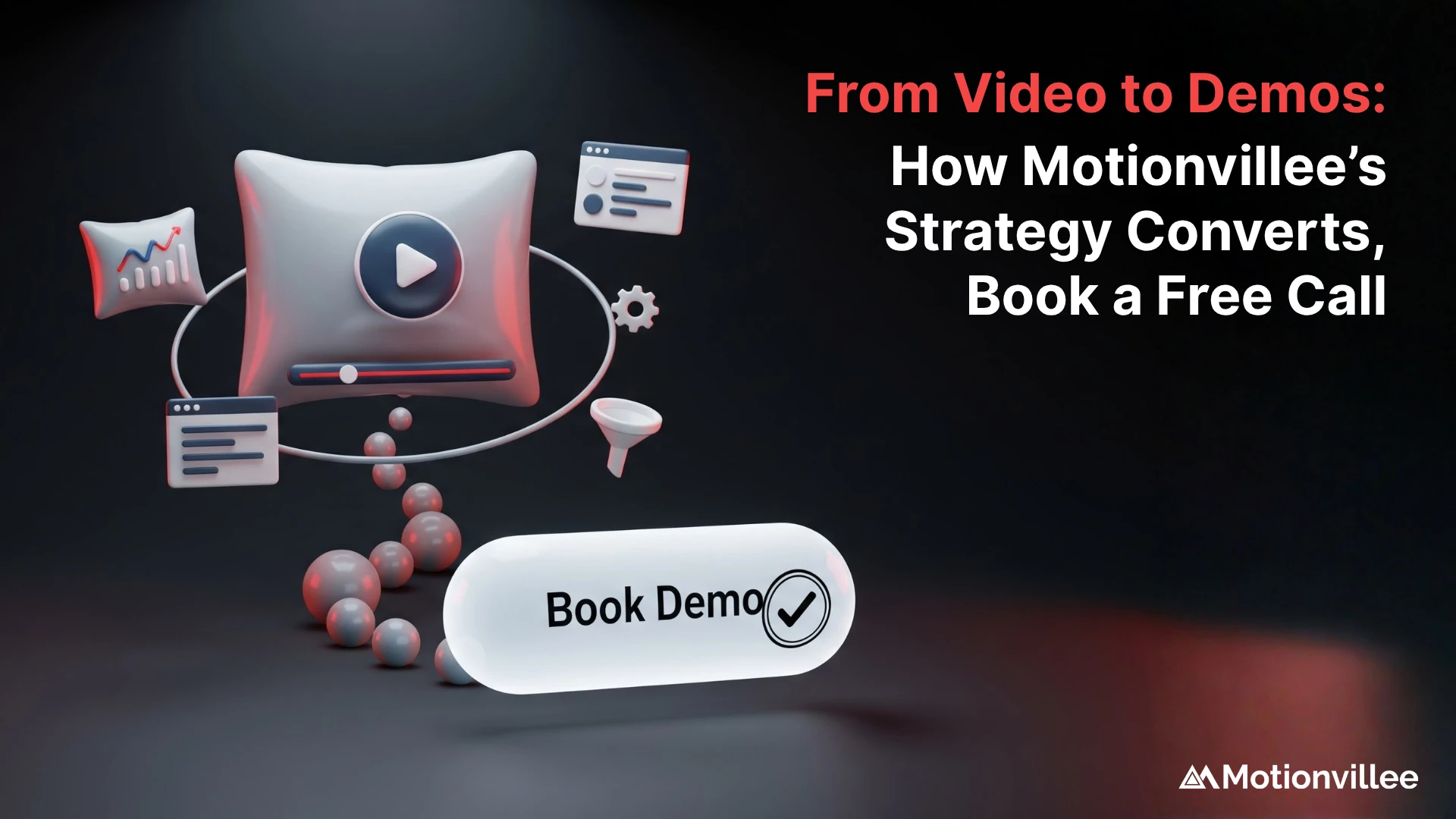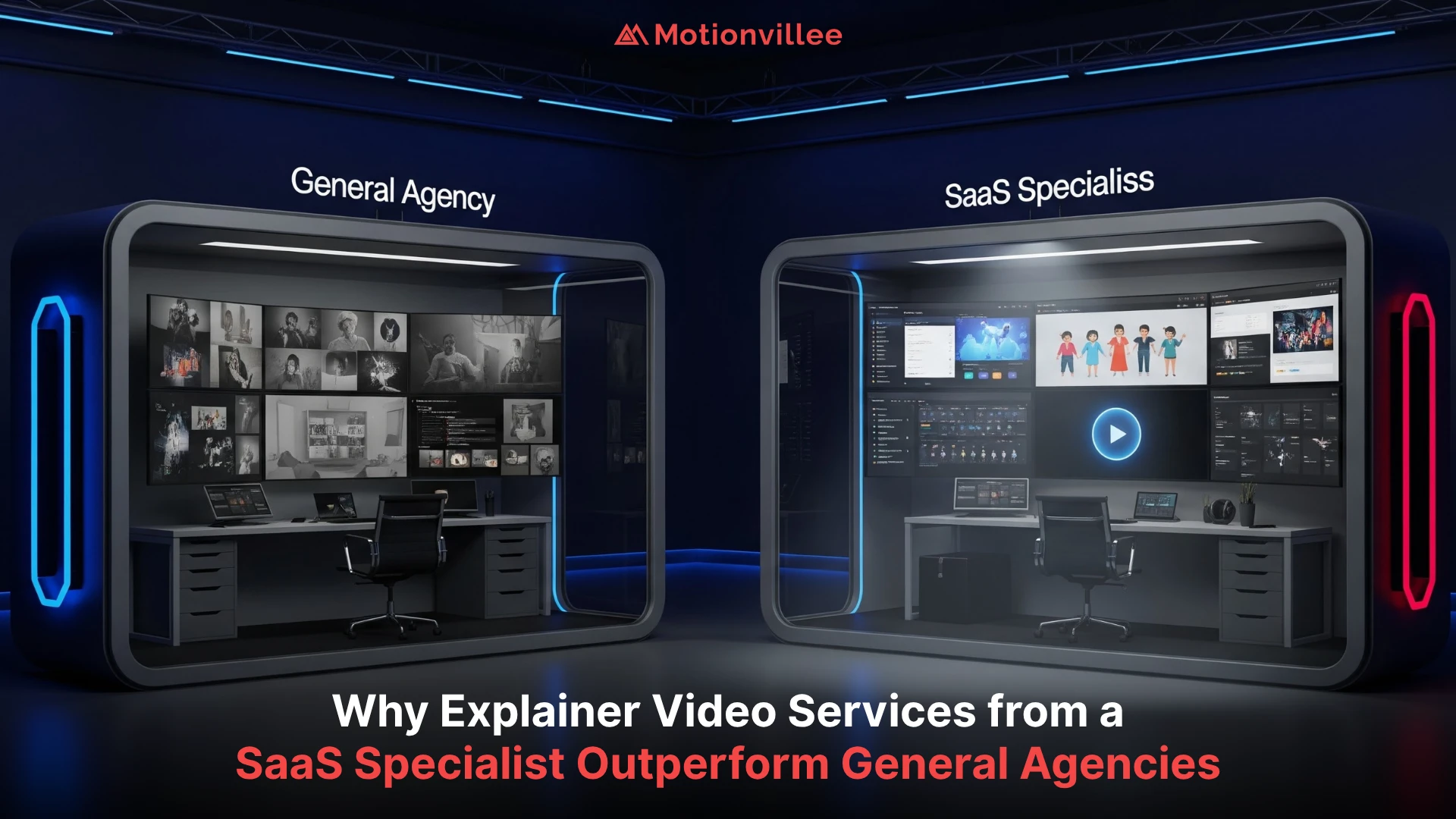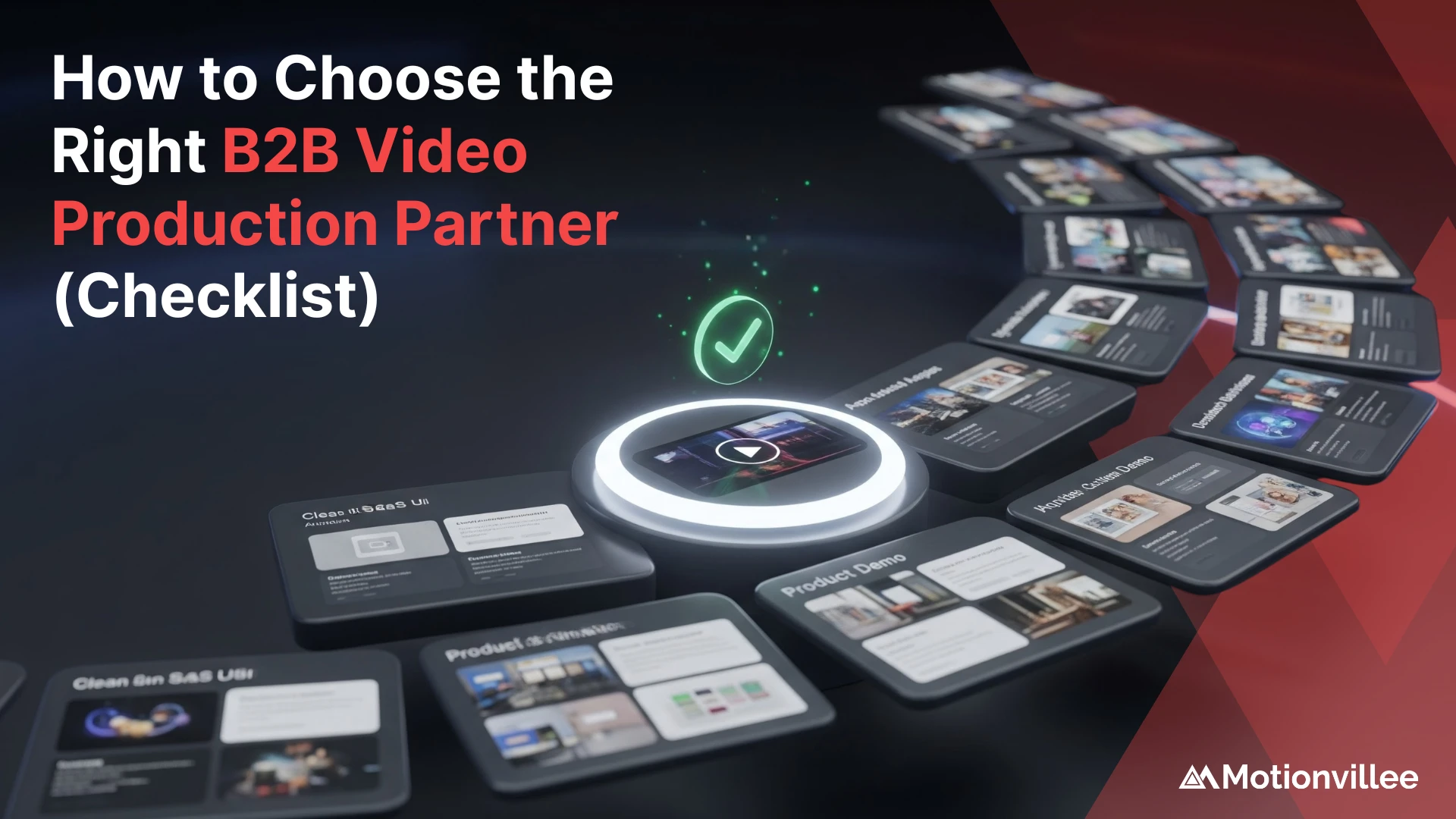If you’re looking for product demo video examples that actually drive results, you’re in the right place. In 2025, attention is currency, and product demos are one of the most effective tools to capture and convert it. Whether you’re showcasing software, simplifying onboarding, or helping prospects understand your solution, a well-crafted video can do what static presentations and decks cannot. It shows, not just tells.
Creating a standout product demo video is about more than listing features. It is about solving real problems, delivering clarity, and helping the viewer understand how your product fits into their workflow. In this blog, we’ve handpicked 10 exceptional examples from well-known brands. For each, we break down what works and how you can apply the same approach to your own demo videos.
What Makes a Product Demo Video Great in 2025?
A great product demo video does more than explain what your product does. It shows how it fits into the viewer’s world, solves a specific problem, and makes their work easier. In 2025, where most buyers do their own research before reaching out, your video often speaks before your team does. That means it needs to land quickly, clearly, and with purpose.
Here are a few elements that make a product demo video stand out today:
- Clarity first
Viewers should understand the product’s core value within the first few seconds. A clear message always wins over a clever one. - Real-world context
Instead of a features list, show the product in action. Demonstrating how it solves a problem is far more effective than describing what it can do. - Structure that respects time
Shorter videos perform better, but even longer demos work when they’re clearly segmented. Introduce the problem, show the solution, and guide the viewer step by step. - Narration that adds value
Whether it’s voiceover or on-screen text, good narration guides the viewer. It highlights benefits, not just buttons. - Design and pace
Clean visuals, smooth transitions, and a steady pace keep the viewer engaged without feeling overwhelmed.
In short, the best demo videos today are not about saying more. They are about showing just enough of the right things, at the right time, in a way that builds trust.
1. Apple – AirPods Pro
https://youtu.be/ql6mhhHCldY?feature=shared
Apple doesn’t just list features. It shows how they feel. This AirPods Pro demo pairs crisp close-ups with immersive sound design and clean subtitles to highlight comfort, control, and audio precision. The pacing is designed to follow how viewers naturally engage with content. It starts fast, holds steady through the middle, and ends with a strong finish.
The most memorable moment is a dancer moving to the beat while wearing the AirPods. It’s more than just stylish. It demonstrates real-life use, fit, and movement without saying a word.
What you can learn:
You don’t always need narration to connect. Let the experience lead the story when the product speaks for itself.
Key Takeaway:
Use movement, tempo, and contrast to turn product benefits into intuitive visuals. Whether B2B or B2C, people remember how a product makes them feel.
2. IKEA – IKEA Place App
IKEA has always focused on experience over explanation. With the IKEA Place app, the brand brought its in-store storytelling into the hands of online shoppers. Using augmented reality, the app lets users visualize furniture in their own homes through their phone camera. The product demo video brings this idea to life in a smart and relatable way.
The video is set during the holidays and follows four people using the app to place a virtual IKEA tree in different spots around their homes. By showing the app in use through a first-person lens, the video makes it easy to understand how the tech works without needing a step-by-step guide. The moment when the 3D model transforms into a real tree adds a visual payoff that connects digital experience with physical reality.
What you can learn:
If your product changes how people interact with space, let the user’s perspective guide the story. Real-life settings help bridge the gap between features and usability.
Key Takeaway:
First-person demos make the experience feel personal. For apps and tools that integrate into daily life, showing context is just as important as showing functionality.
3. HelloFresh – Meal Kit Subscription
HelloFresh uses animation to simplify what could otherwise be a detailed explanation. In under a minute, the video walks through how the meal kit subscription works, from sign-up to doorstep delivery. More importantly, it speaks directly to the viewer’s everyday frustrations, like deciding what to cook or finding time to shop.
The video opens strong by addressing a key problem within the first few seconds. From there, it follows a clear, friendly sequence that makes the service feel easy and stress-free. By choosing animation, HelloFresh keeps the pace light and focused, without distractions.
This demo is also strategically placed on YouTube to capture search intent for phrases like “meal delivery service” and “fresh food kits.” When potential customers find it, the video doesn’t just explain the product. It clears doubts and encourages action.
What you can learn:
Open with a problem your viewer already feels. Then use storytelling to show how your product fits naturally into their life.
Key Takeaway:
Animation is perfect for simplifying processes. If your offering involves multiple steps, use visuals to guide the viewer and reduce cognitive load.
4. Pazo – AI-Powered Retail Compliance
Retail operations are complex, especially at scale. Pazo’s AI-powered platform simplifies that complexity by using image recognition to detect planogram compliance issues across retail locations. This product demo, crafted by Motionvillee, turns a layered process into a clear, visual story that decision makers can instantly grasp.
The video opens with a real-world challenge: maintaining consistent brand execution in stores. It then walks viewers through how Pazo’s automation detects issues, scores compliance, and creates instant feedback loops for teams, all without manual intervention. Clean motion graphics paired with focused narration make the system feel practical, not technical.
What makes this product demo video effective is how it shows value in context. From intelligent task assignments to real-time analytics, every benefit is tied to operational outcomes that matter to enterprise retail teams.
What you can learn:
If your product streamlines a complex workflow, do not just talk about automation. Show how it removes friction, improves speed, and drives clarity across teams.
Key Takeaway:
Effective SaaS demos combine clarity with purpose. By showing real use cases and outcomes, your product becomes more than software. It becomes a solution buyers can visualize in action.
5. Headspace – Meditation App
Headspace stays true to its core purpose by helping users feel calm and focused. Its animated product demo video mirrors that same tone with soft visuals, gentle music, and a soothing voice over. From the very first second, the ambiance reflects the experience users can expect inside the app.
The video does more than explain features. It directly speaks to concerns that often hold people back. Not enough time to meditate? Headspace introduces quick three-minute sessions. Unfamiliar with mindfulness? The visual style and narration make everything approachable and easy to follow.
By blending tone, storytelling, and problem-solving into one short video, Headspace turns explanation into reassurance.
What you can learn:
Match the mood of your video to the experience of your product. When tone and message align, trust builds faster.
Key Takeaway:
Your product demo is an extension of your user experience. Keep it consistent in tone, design, and pace to build credibility and emotional connection.
6. Mixpanel – Product Analytics Demo
Mixpanel takes a practical approach to product demonstration by using real screen recordings to walk users through its platform. The video runs just over 11 minutes, but it is neatly organized into chapters like “Insights,” “Charts,” and “Segmentation.” This allows viewers to jump directly to the features they care about most.
Instead of rushing through a highlight reel, Mixpanel takes the time to explain how each part of the dashboard works. For a tool that could feel overwhelming at first glance, this structure provides clarity. It helps viewers picture how their own data would appear and function inside the platform.
This kind of walkthrough works especially well for technical audiences who want to see the product in action, not just hear about its benefits.
What you can learn:
If your product is complex, focus on structure and clarity. Give viewers the option to navigate and learn at their own pace.
Key Takeaway:
Screen recordings can create trust by showing the actual user experience. When paired with clear narration and chapter markers, even long demos can feel accessible.
7. Greenhouse – Scalable Hiring Platform
Hiring at scale is no longer just about filling roles. It is about building consistent systems that help teams grow with purpose. In this explainer video, Motionvillee brings the Greenhouse platform to life by turning a complex recruitment process into a visual journey that is simple, structured, and easy to follow.
The video highlights how Greenhouse connects every stage of hiring, from sourcing to onboarding, into one cohesive experience. Instead of overloading the viewer with details, it uses focused messaging and motion graphics to show how the platform adapts to different hiring needs. Whether a company is hiring locally or expanding globally, the workflows stay scalable and tailored.
What stands out is the video’s user-first approach. It shows how teams can collaborate across departments, automate repetitive tasks, and gain visibility into every part of the hiring funnel. Every frame is designed to reflect real pain points and show how Greenhouse solves them.
What you can learn:
A strong product demo simplifies complexity. Focus on the experience your software delivers, not just its technical depth.
Key Takeaway:
If your SaaS platform supports growth and collaboration, your video should mirror that. Show how each feature contributes to a bigger outcome such as faster hires, stronger teams, and better workflows.
8. Slack – Canvas Feature
Slack takes a focused approach to product demos by treating features like standalone solutions. In this video, Canvas is not presented as just another tool within the platform. It is positioned as a practical way to solve a common workplace challenge: organizing and sharing information in the middle of constant messaging.
Instead of walking through every function, the video zeroes in on one pain point and one solution. The demo shows how Canvas helps teams keep key information visible, searchable, and easy to manage. This kind of clarity makes the video more memorable and more effective.
For software companies, this is a smart move. Highlighting one feature per video helps avoid overload and allows each message to land clearly with the right audience.
What you can learn:
You do not need to show everything at once. Choose one problem, show how your product solves it, and let that be the focus.
Key Takeaway:
When a feature solves a specific need, it deserves its own spotlight. A focused demo helps your viewer remember not just what your product does, but why it matters.
9. Nespresso – Aeroccino Plus
Nespresso approaches its product demos with style and subtlety. Before diving into the actual demonstration, the video opens with a short five-second sequence filled with cinematic touches like slow motion and tight zooms. This sets the mood and builds anticipation before showing how the product works.
Positioned as a premium brand, Nespresso communicates that same feel in its video without relying on voiceover or heavy explanation. Instead, a sharply dressed barista takes viewers through the process visually, showing how the Aeroccino Plus fits into a refined coffee-making routine.
The lack of dialogue puts full focus on the experience, emphasizing design, ease, and elegance. It is a reminder that product demos can reflect brand values just as much as they show functionality.
What you can learn:
Sometimes, less explanation creates more impact. When your product is design-forward or lifestyle-driven, lean on visual storytelling.
Key Takeaway:
Use pacing, mood, and visual detail to position your product. A well-crafted intro can elevate the entire viewing experience and set the tone before the demo even begins.
10. Basecamp – Project Management for Small Teams
Basecamp is built for small teams that need clarity without the clutter. This product demo, created by Motionvillee, captures that mission with simple, purposeful visuals and clear messaging that reflects the platform’s clean interface and practical functionality.
The video presents relatable team challenges like scattered communication, missed deadlines, and disorganized workflows. Instead of overcomplicating the message, it walks through how Basecamp solves these problems using a single-page layout. The narrator speaks directly to small teams, reinforcing the platform’s value in helping them stay organized, focused, and competitive.
By keeping the design minimal and highlighting only what matters, the video mirrors the user experience Basecamp aims to deliver. It also emphasizes real collaboration features like task assignments and progress tracking in a way that is easy to understand.
What you can learn:
Speak to your core user. A product demo works best when it focuses on the audience’s real problems and shows how the solution fits their world.
Key Takeaway:
Simplicity sells. A clear, relatable message paired with thoughtful visuals can do more than just explain features. It can create confidence in the product.
Final Takeaways for B2B Brands
The best product demo videos are not about showing every feature. They are about showing the right value at the right time. Whether it is a 30-second animated walkthrough or a detailed platform tour, the goal is the same. Help your viewer understand, relate, and take action.
Here are a few patterns the most effective demos in this list have in common:
- They start with a problem the viewer already knows
- They focus on one core message or use case
- They use visuals to simplify, not overwhelm
- They reflect the product’s tone, experience, and value
- They guide the viewer with structure and clear narration
B2B buyers today want clarity, not complexity. A well-crafted demo video bridges the gap between what your product does and why it matters.
If you’re planning your next product demo video, it should do more than look good. It should move prospects through your pipeline and support your sales and onboarding journeys across touchpoints.
At Motionvillee, we help SaaS and B2B companies bring their products to life through explainer videos that inform, persuade, and convert.
Ready to tell your story with clarity and impact?
Schedule a call with our team to explore how Motionvillee can help create video content that your buyers actually want to watch.







